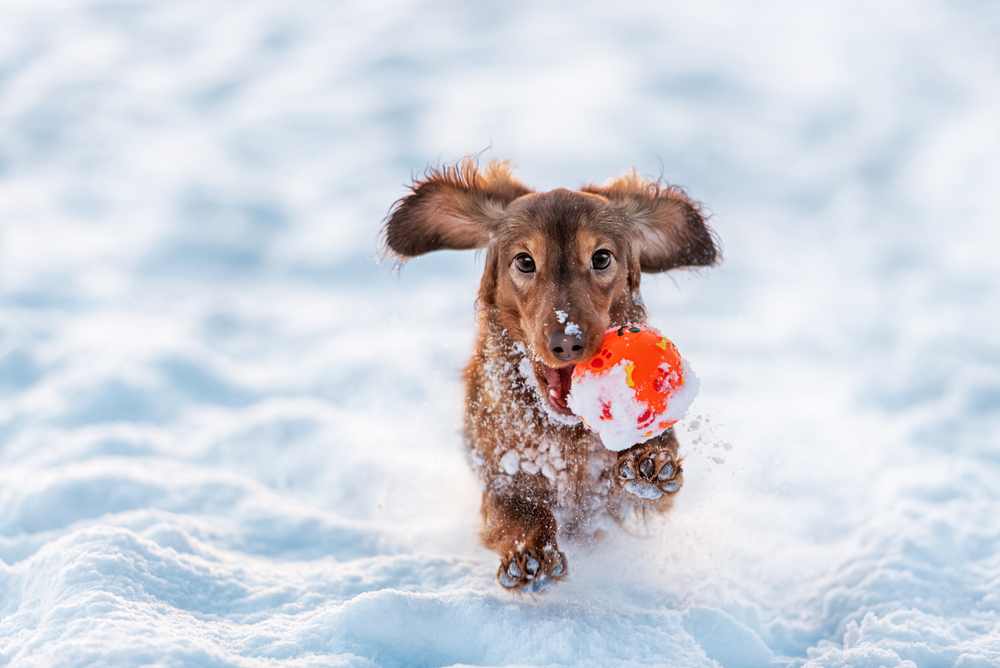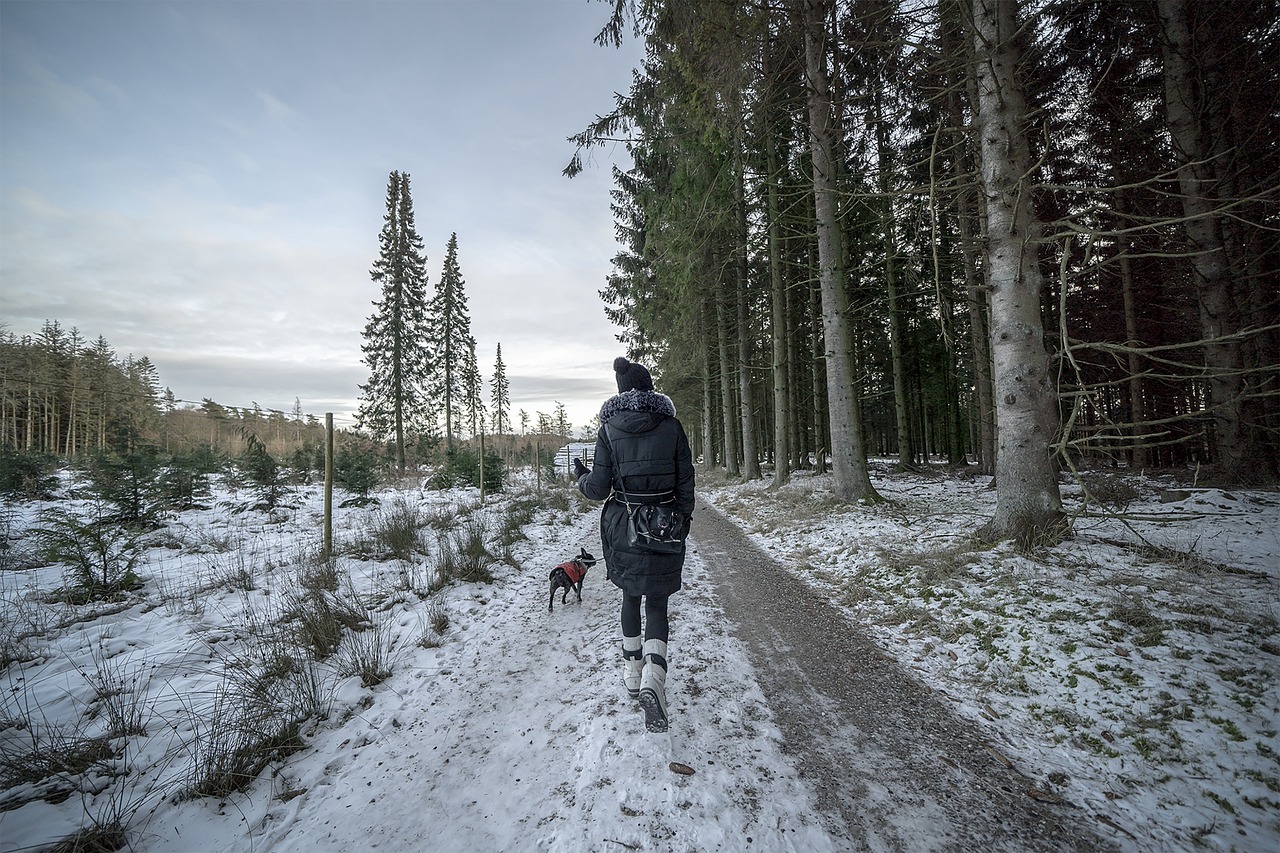9 Tips for Keeping Your Dog Safe in Cold Weather
December 03, 2020
Written By: VetriScience
By Cynthia Garcia
With the holidays around the corner, many of us have begun preparing for the cold months ahead. As you get your house ready for winter, make sure your dog is ready to face the challenges that cold weather poses for their health and safety. Just like us, our four-legged friends are also affected by extreme weather conditions. Even though most dog breeds are usually better equipped for winter thanks to their coats, it's up to us to ensure their safety.
Generally, even dogs with thick coats feel uncomfortable when the temperature drops below freezing. Small breed dogs and those with short coats will feel colder compared to those with thicker coats or larger bodies. Even a thick coat still leaves their paws, tail, nose and ears exposed to the elements. Likewise, senior dogs will be more affected by the cold than younger ones. Here are 9 tips to help you prepare your dog for the cold weather.
1. Consider Dietary Needs
Some dogs may need more food during the cold months since they will be burning more calories to stay warm and comfortable. You may consider increasing their daily portion during winter, but don't overfeed them. Other dogs, however, may get less exercise and burn fewer calories in the winter if they can't handle the colder weather.
Our canine friends tend to dehydrate faster in winter. Even though some dogs eat snow, it's not the best option for hydrating. If your dog is in the yard, make sure they have easy access to fresh water and remember to regularly check if ice has formed on top of the water.
2. Provide a Cozy and Warm Place to Sleep
A thick blanket and soft bed can provide your dog with extra warmth during the cold months. If your dog sleeps in a chilly or draughty part of your home, you should consider getting them a self-warming mat that can help them retain body heat. Make sure to keep your house more cozy and warm if your dog spend a lot of time outside.
3. Get Your Dog a Sweater or Jacket
Some breeds with plush coats like Malamutes and Huskies can handle the cold better than the short-coat breeds. If your dog doesn't have a lush coat, you may want to get them a sweater or jacket. You can find a proper fitting jacket by measuring your dog's size around the chest, the neck and across the shoulders. Look for a jacket that isn't too tight and doesn't have an irritating zipper.
4. Limit Time Outside
During the cold months, you should supervise your dog when they’re roaming around your cold garden as their paws, tail, and ears are prone to frostbite. Make sure they’re not spending too much time outside and you may even want to keep them inside during extreme cold spells.
5. Always Inspect Their Paws
Pay extra attention to your dog's paws after they’ve been outside. Their paws are susceptible to frostbite, and the snow can also hide hazardous objects that can harm your dog. It’s important to check their paws for injuries every time they go outside. If possible, you should consider fitting him with some booties to protect their paws.
6. Give Your Dog Supplements
Dogs that struggle with joint stiffness, discomfort and limping tend to suffer more during the cold season. That's because the muscles around the joints tend to contract when it's cold. As a result, you may want to start giving your dog GlycoFlex® supplements to keep their joints healthy and strong throughout the cold winter months!

7. Keep Your Dog Away from Heaters
During the cold season, dogs will snuggle too close to the heating source. You can protect them from getting burned by installing baseboard radiator covers and avoiding space heaters. An open fireplace poses a significant threat to our canine pals; therefore, a reliable, pet-proof system can keep your dog out of harm's way.
8. Moisturize Their Skin
The cold and dry weather can do a lot to your dog's skin. That’s why it’s important to keep their coat moisturized to prevent dry, flaky and itchy skin. Coconut oil is a unique natural moisturizer that can help keep your dog's coat and skin healthy during the cold months. If you notice that their tail, ears or paws are cracking or dry, you can also apply some coconut oil on the affected part of their body.
9. Protect Your Dog From Hypothermia
If your dog is outside for an extended period, their temperature can fall below the average level resulting in hypothermia. Mild hypothermia can make your dog inactive and weak and they won't be able to stop shivering. If you notice these signs, you should move your dog to a warm place and wrap their body in warm blankets. As the condition worsens, dogs can become unresponsive. If this happens, contact a veterinarian as soon as possible.
As pup parents, your dog's safety and well-being should be your top priority. Prepare your home to keep them warm in winter, and if your dog has a short coat, you may want to get them a jacket or sweater. However, even thick coats don't cover a dog's ears, nose, tail, and paws. Therefore, you should always keep an eye on the uncovered parts of their body, especially the paws. But most importantly, try to keep them safe and warm during all of your outdoor adventures this winter!
Cynthia Garcia is the editor and content creator at the Crazy Pet Guy. She’s a passionate pet rescue supporter and in her free time, she's always looking for ways to help the community.




